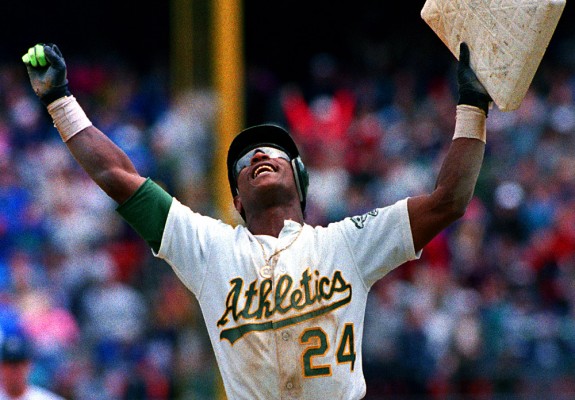Yesterday in the Power Rankings, I
looked at Carlos Gomez for the Brewers. Now, Carlos Gomez might be someone you’ve
never heard of, but he is a statistician favorite. For a good chunk of the year,
probably until about August, Gomez led the Major Leagues in Wins Above Replacement. A small injury and a recent slump put him down from first, but he
still owns a 6.7 WAR, according to Baseball-Reference.com. Much of it is
because of his superb defensive capabilities, and deserves to win the gold
glove out in center field. He only bats .282/.337/.496 and has struck out 125
times, but he also has 19 homers, 9 triples, and 33 steals.
Yesterday, I mentioned how he was
the league leader with a 24.1 Power-Speed number. What’s a power-speed number?
I asked the same question to myself.
Power-speed number is a sabermetrics
stat developed by Bill James (the father of sabermetrics and basically a king-figure
to me) that combines a player’s home run and stolen base numbers into one
number. The equation is really simple. It’s just this:
It’s really not that
bad at all. Since Gomez has 19 homers and 33 steals, it would be 2 * 19 * 33,
which is 1,254, divided by 33+19, which is 52, to get you 24.11538, or just
24.1.

 The highest
single-season power-speed number was Alex Rodriguez’s 40-40 year in 1998, where
he hit 42 homers and stole 46 bases, recording a power-speed number of 43.9. Barry
Bonds has the highest career power-speed number (remember before he took roids,
he was a great stealer. In fact, if he didn’t take steroids, he might have been
able to break Rickey Henderson’s record). With 762 homers and 514 steals, Bonds
has a career number of 613.9. Henderson is in second with 490.4.
The highest
single-season power-speed number was Alex Rodriguez’s 40-40 year in 1998, where
he hit 42 homers and stole 46 bases, recording a power-speed number of 43.9. Barry
Bonds has the highest career power-speed number (remember before he took roids,
he was a great stealer. In fact, if he didn’t take steroids, he might have been
able to break Rickey Henderson’s record). With 762 homers and 514 steals, Bonds
has a career number of 613.9. Henderson is in second with 490.4.
Another player to watch
out for with this is Mike Trout, another statistician favorite. Trout had the
highest in the Major Leagues last year with 37.2, and another Brewer, Ryan
Braun, led the NL with 34.6.
So why is a Power/Speed
number important? First off, hitting home runs and stealing bases might be the
two most important offensive stats in baseball. Hitting a home run, obviously,
automatically gives the team at least one run. Stealing is important because
instead of having a man on first with a chance for a double play, you have a guy on second, thus a man in scoring position.
James himself has referred to this stat as a “freakshow” stat with little
analytical value. And it’s quite true. There’s not much to it, but there’s a
lot to get from it.
We’ve seen big sluggers
like Ryan Howard, Greg Vaughn, even Jim Thome, where it’s either a home run or
it’s a strikeout. So what differs from these players compared to guys like
Bonds, Sammy Sosa, and A-Rod? All of them can get on base and walk a lot. The
three I just mentioned do hit for contact much more, but in their prime, they
stole bases. Yes, Bonds and Sosa both sharply declined in their base running
abilities once they got in their thirties, but both have had a couple of
seasons with 30-30 steals/home runs.
Speed does not have to deal with just stealing bases, but to on base running as well. I’d much rather have a guy like Tim Raines or Paul Molitor run home on a single to Vladimir Guerrero than to have Mo Vaughn or Scott Hatteberg.
Combining the two
statistics is a great idea, in my opinion. To be fair, though, Bill James has
yet to make a bad statistic. He’s Bill James. I’ll keep this statistic going
for later because I think it can be impactful to certain players. Email me at statsbuddy42@gmail.com for any
questions/comments/concerns.
-Evan Boyd

No comments:
Post a Comment